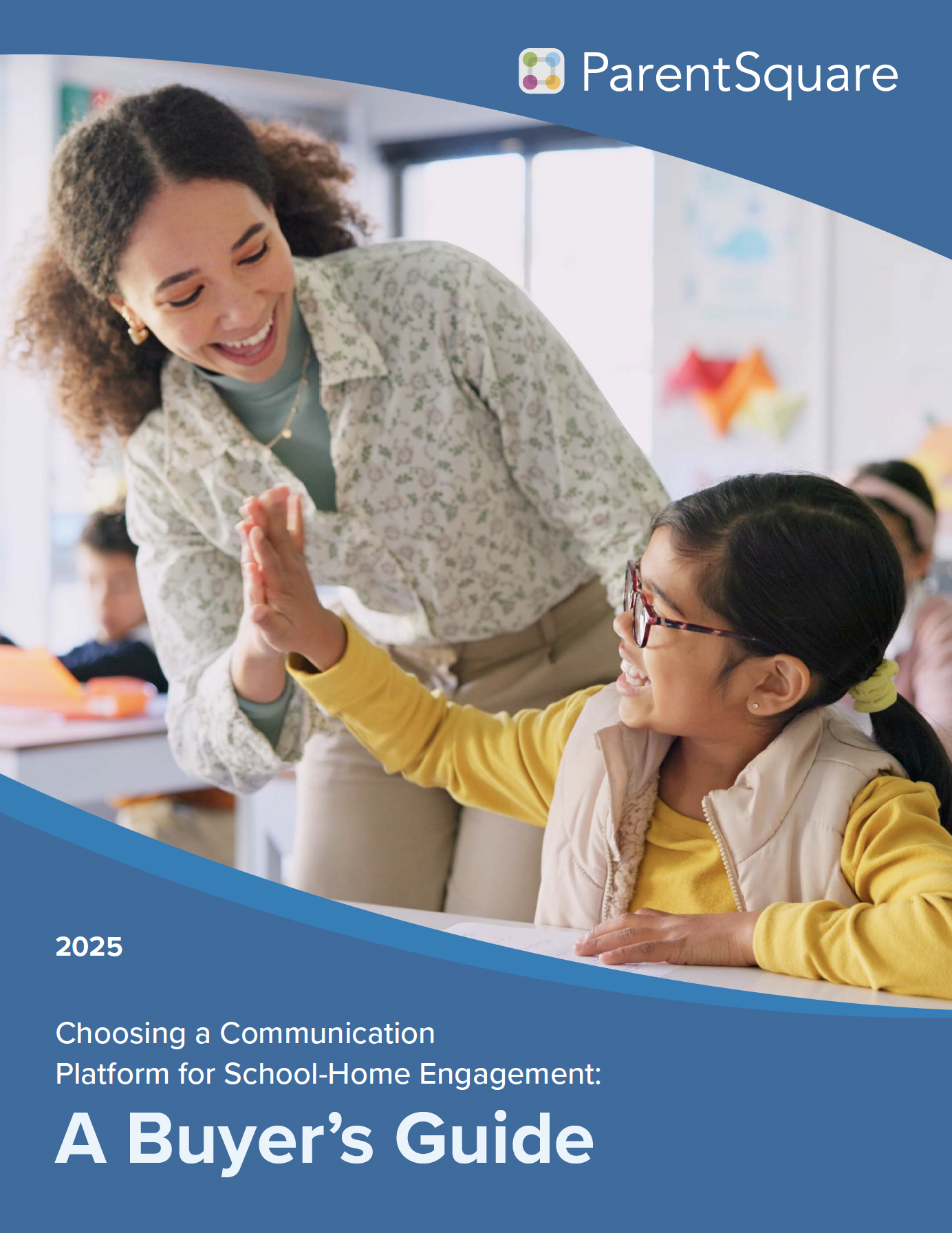
Pennsylvania District Unlocks the Secret to Effective School-Home Communication
Spring-Ford Area School District (PA)
Challenge
The district was using a basic communications platform that didn’t include translation, two-way communications, and other advanced functionalities that they needed to support their educators, families, and students.
Solution
The district implemented the award-winning ParentSquare school-home communications platform along with its StudentSquare app for greater family engagement, robust translation and privacy features, and consolidation of various apps.
Results
The district now has contactability rates nearing 100% and a platform that not only provides more efficient and reliable school-home communications but also supports the Positive Behavioral Interventions and Supports (PBIS) framework.
Spring-Ford Area School District in Royersford, Pa., was using SchoolMessenger (now PowerSchool) for about 16 years when it realized it needed a modern school-home communications platform. “SchoolMessenger was pretty much only able to send out emails or phone calls quickly,” says Erin Crew, director of communications for the 8,000-student district. “It had no reliable translation services at all.”
Once a message was sent out, it only existed in email. This made replicating the message across different mediums like newsletters and the website very time- and labor-intensive. “We were doing a lot of double work,” says Crew, who learned about the ParentSquare safe and secure school-home communication platform at a local school event.
Name
Spring-Ford Area School District
Type
District of 11 schools serving grades K-12
Students
8,000
Location
Royersford, PA
“ParentSquare was there presenting, and I thought, ‘Oh, this is where we need to be,’” says Crew, who also evaluated Finalsite, the district’s website design and development provider at the time. “I led a small group of users to assess the two options and ParentSquare was the clear standout.”
Meeting Parents Where They Are
The district rolled out ParentSquare in July 2024. Staff, administrators, and parents began using the platform immediately and secondary students are now beginning to use StudentSquare, which creates a safe and secure communication and workflow center between educators and students.
Crew says more students began using the platform after she posted a message about it on Instagram. “Students in grades 5-12 are now getting on StudentSquare and activating their accounts themselves, which is great,” she says.
ParentSquare also fills the translation gap for the district’s families, which speak about 37 different languages. “That was an area where we weren’t succeeding because of the tools that we had in place,” says Crew. “One school that offers regional programming has seen a significant participation increase thanks to the fact that families are now receiving information in their native languages.”
Most parents also like receiving communications via mobile app versus email, the latter of which was the school’s go-to communication method prior to adopting ParentSquare. “This surprised me, but now we see that everyone who has the app wants their messages instantly,” Crew explains. “We’re meeting parents where they are.”
“That was an area where we weren’t succeeding because of the tools that we had in place. One school that offers regional programming has seen a significant participation increase thanks to the fact that families are now receiving information in their native languages.”

Erin Crew
director of communications
Using ParentSquare to Support the PBIS Framework
ParentSquare gives the district another valuable tool that it can use to support the PBIS framework to help create a positive and safe learning environment for all of its students. The framework focuses on prevention versus “reaction.” So instead of solely punishing misbehaviors, PBIS’ goal is to teach and reinforce positive ones.
Dr. Kathie Kotch, a fifth grade house principal, says teachers update parents at least once a week both on their individual students’ progress plus the accomplishments of the broader class and/or school. This positive reinforcement and early alert system (depending on exactly what transpired) helps teachers establish clear, consistent and well-communicated behavioral expectations.
“Whether it’s a class reward or individual student reward, teachers use ParentSquare to share improvements they’ve seen in certain behaviors,” says Kotch. “Because many of our teachers are younger, they’re more apt to just grab their phones, send those messages and make those important connections.”
Jason Thompson, a sixth grade house principal, says the platform also supports a more “informal” approach to keeping parents in the know. So much so, in fact, that teachers are moving completely away from using email for weekly school-to-home messaging and to use ParentSquare instead.
The platform also supports the school’s wider PBIS initiatives, like its “Rowdy Ram” coupons and “Ram Amazing Jars,” which were named after its mascot. When students do something that goes above and beyond what’s expected, they get a Rowdy Ram coupon that can be turned in later for a certificate. Students can also earn coins that go into jars that, once filled up, are used for prize and incentive drawings.
“We focus on positive incentives and on helping students see what needs to be done right in front of them, like picking up trash in the cafeteria,” says Kotch. “It’s not unusual to see students scurrying around the cafeteria or school bus, picking up every piece of trash on the floor, because we’ve included cafeteria recess as part of our reward.”
Thompson says his school has also identified certain areas that could use some “tightening up” and is applying PBIS in those areas. Then, it’s conveying the progress and accomplishments to families and the community via the ParentSquare platform.
“One area that we just identified is the school bus, where it’s easy to be punitive when students misbehave in that environment,” says Thompson. “We wanted to unify the expectations and the language from the classroom. It’s been an undertaking, but we’ve seen the relationships strengthen with the bus company and with the individual drivers. It’s been positive so far.”
“Whether it’s a class reward or individual student reward, teachers use ParentSquare to share improvements they’ve seen in certain behaviors. Because many of our teachers are younger, they’re more apt to just grab their phones, send those messages and make those important connections.”

Dr. Kathie Kotch
fifth grade house principal
All Communications in One, Unified Platform
Today, Spring-Ford Area School District’s parents have a reliable, centralized place to go for everything they need to know about their students, schools, and extracurricular activities. They no longer have to search through email inboxes to find event times, for example, or hope they didn’t inadvertently delete an important text on their phones.
“It’s all in one spot now,” says Crew, who really likes the ParentSquare platform’s ability to set up reminders for upcoming assignments, tests and events as well as enabling quick and easy text messaging while letting teachers send messages to an entire class, a specific group of students, or individual students.
This year, Crew is pushing ParentSquare and newsletters out to the district’s website. Districtwide contactability is nearly 100% for the platform, which provides a streamlined, one-stop-shop for all of its school-home communications. About 1,100 employees use the platform, 600 of whom are teachers. “Everyone is using the same app,” says Thompson, “which serves the same universal purpose for all.”
Teachers really like being able to see whether a recipient opened the message or not. This eliminates the “we didn’t get the email” excuse and also allows teachers to follow up and resend only to those individuals who didn’t open their messages (versus having to follow up with everyone all at once). “All of our parents know where to get the information now; there’s no question about it,” says Crew, who adds that many parents found the app on their own and started using it without even being prompted to do so.
“That really blew me away,” Crew says. “Our parents figured it out on their own and teachers are using it regularly because they’re amazing, dedicated professionals. It’s really going great.”







